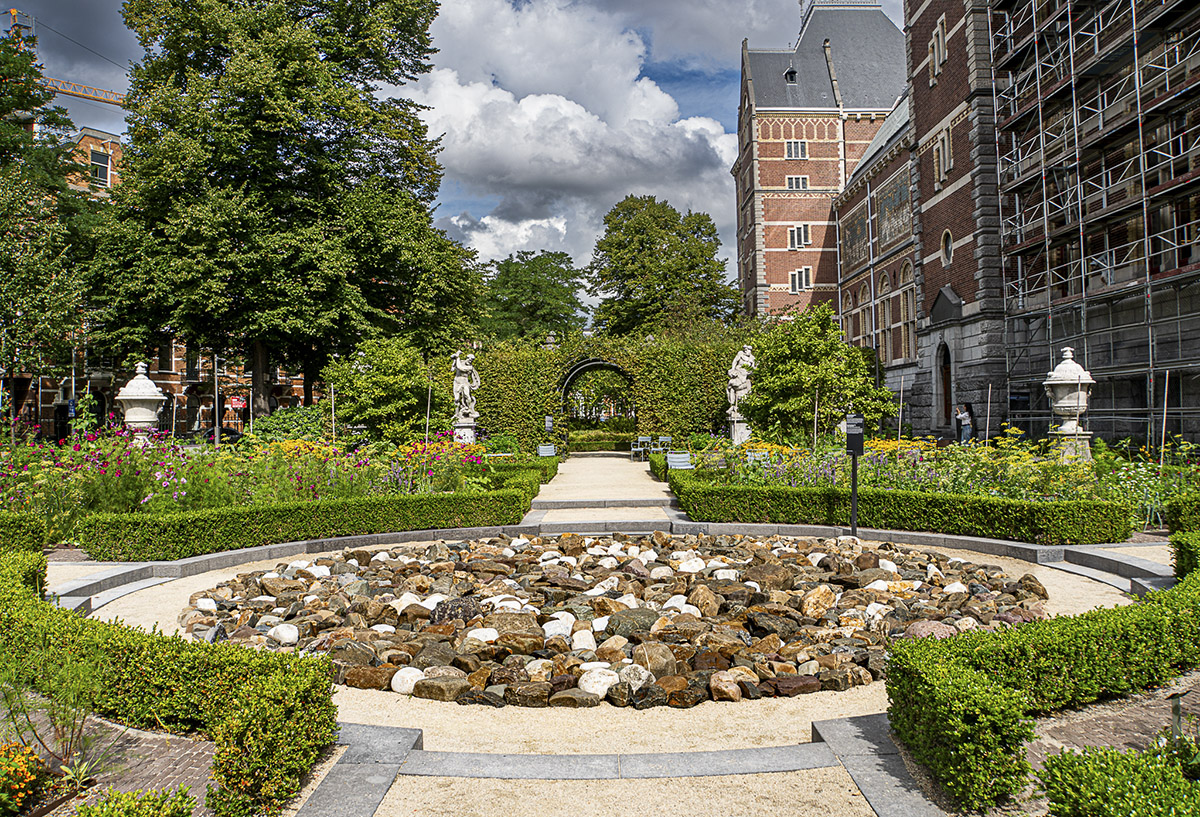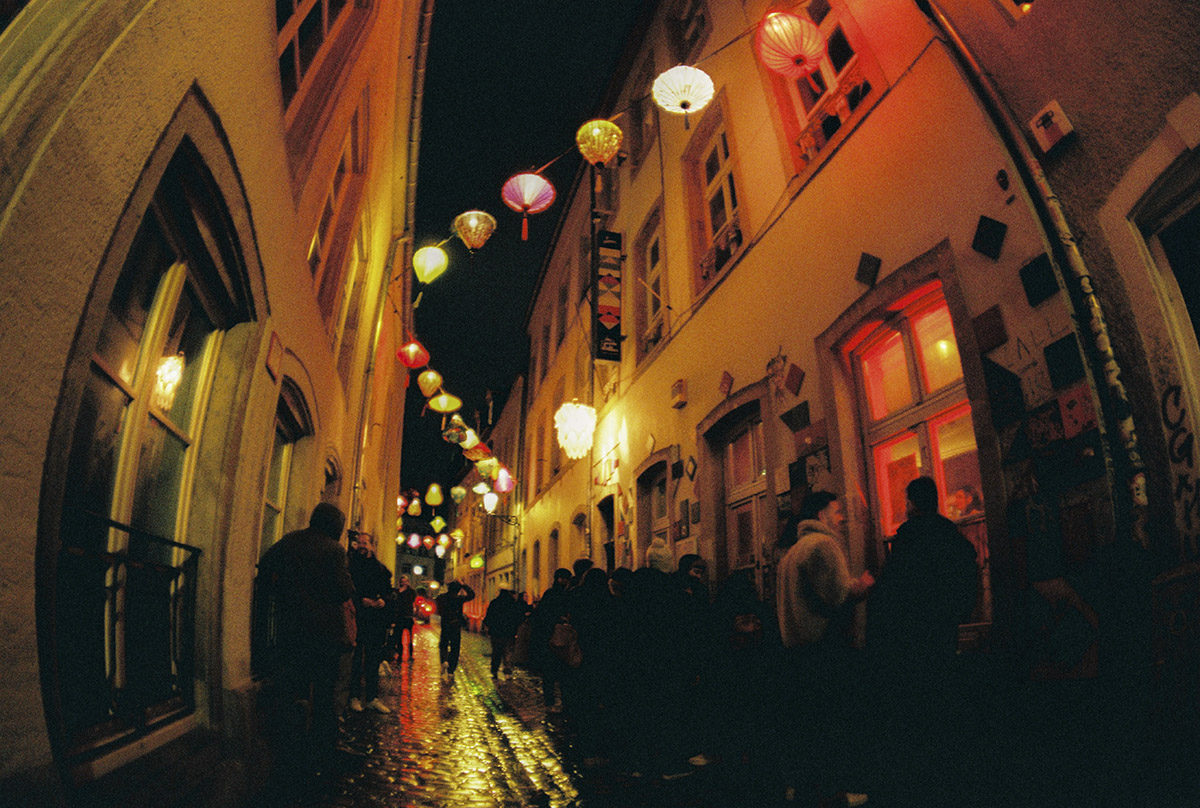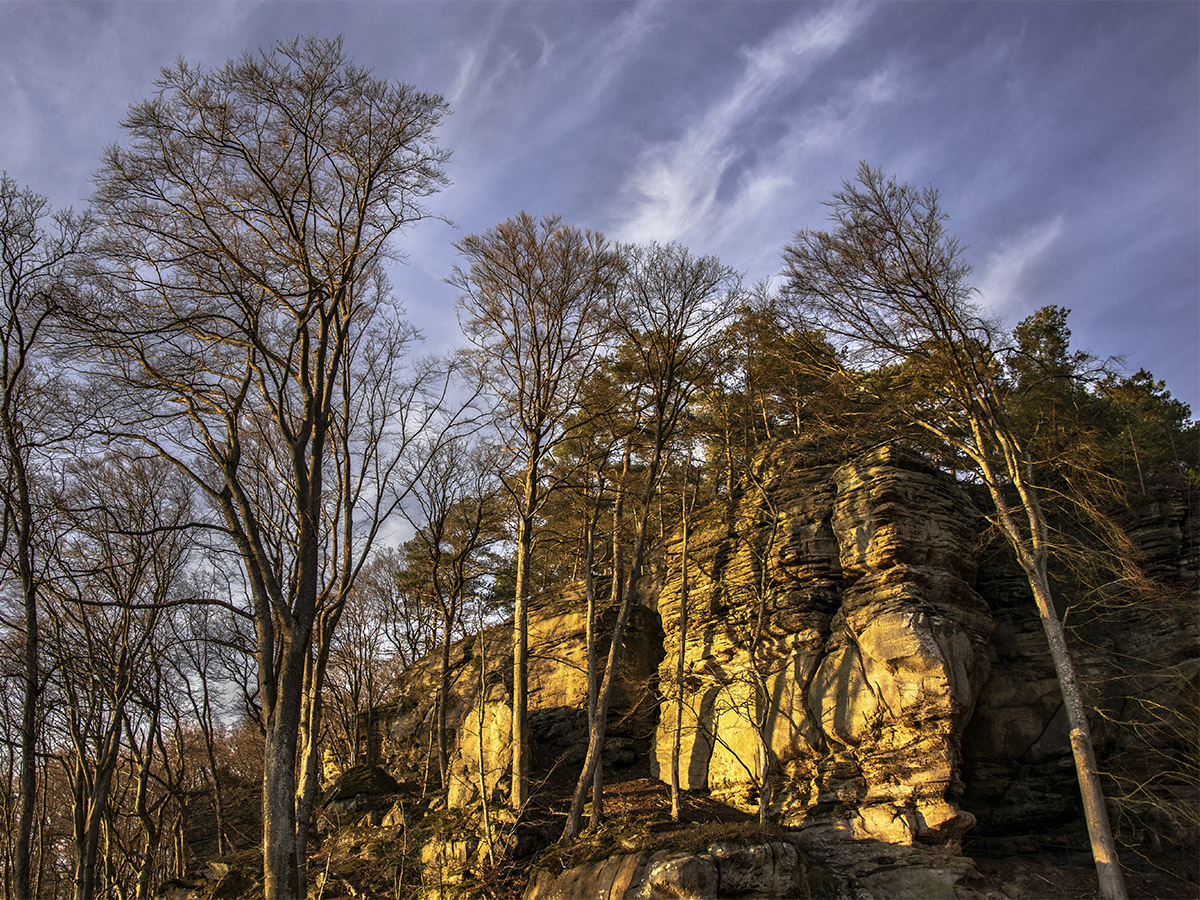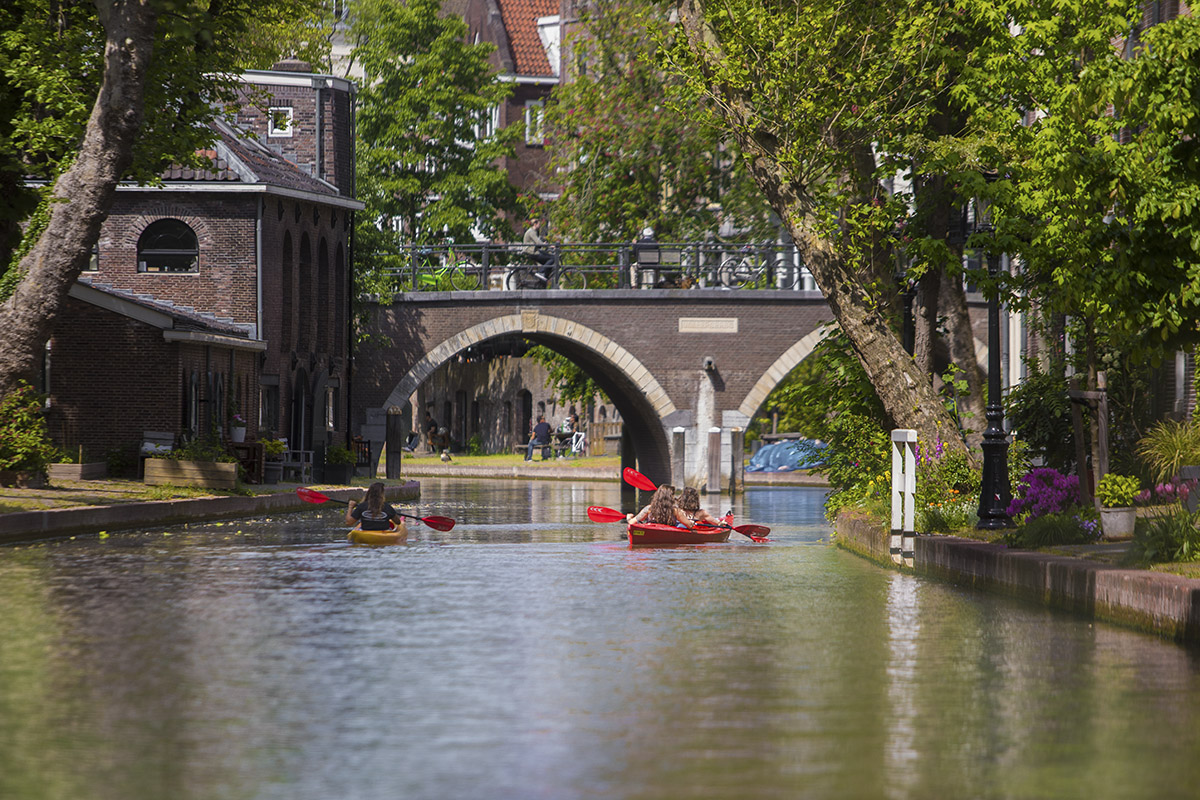The authentic Sainte-Catherine and Saint-Géry
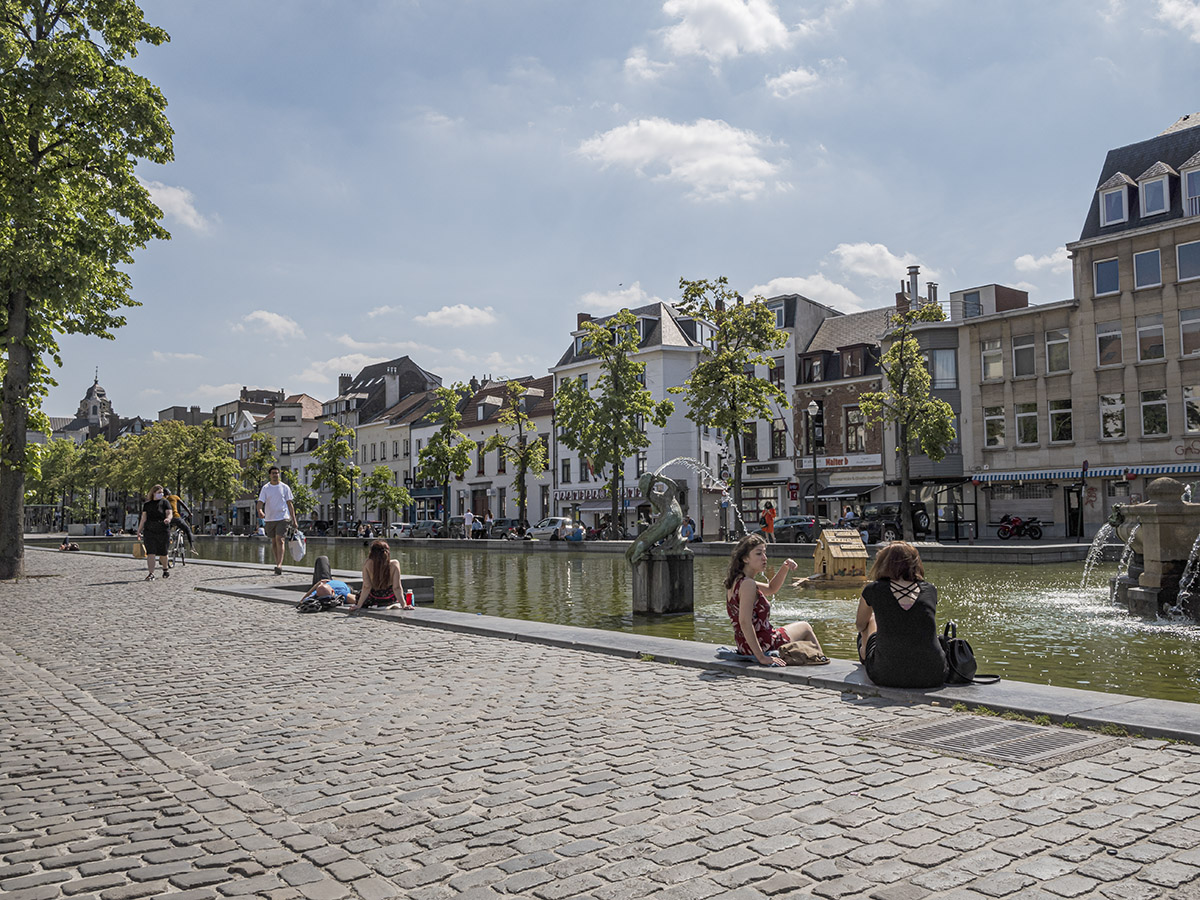
Marché au Poisson. Photo: ©Visit Brussels, Jean-Paul Remy
Separated from the historic centre by Boulevard Anspach, the districts of Sainte-Catherine and Saint-Géry are hotbeds of innovation and cosiness. Unlike their historic counterparts, they aren’t packed with spectacular sights and legendary hotspots, but it’s a great destination for those who want to discover the real Brussels.
What Sainte-Catherine and Saint-Géry (the ‘second centre’) might lack in bombastic sights, they compensate for with cosy restaurants, bars and alleys. Sainte-Catherine and Saint-Géry are for strolling, tasting and relaxing. And what could make a better holiday than that?
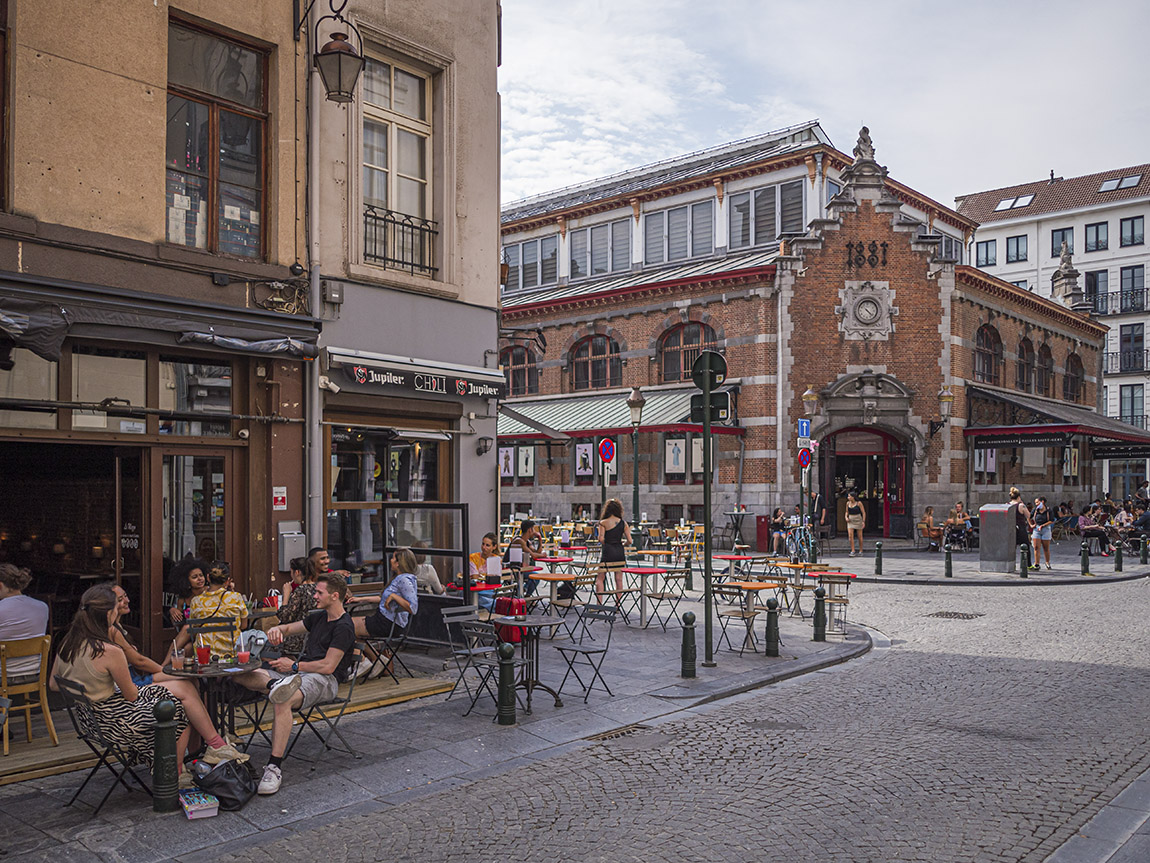
Halles Saint-Géry. Photo: ©Visit Brussels
Sainte-Catherine
If the Bruxellois say they’re about to stroll through the city, there’s a big chance that they are referring to Sainte-Catherine rather than the actual centre. At and around Place Sainte-Catherine, there are shops, terraces and picture-perfect alleyways aplenty. On the square itself, the Église Sainte-Catherine will grab your attention. In the weeks before Christmas, its facade makes the canvas for a spectacular light show. If you walk to the back of the church, you’ll find the ancient Tour Noire (Black Tower). As it dates back to the 13th century, this old city gate could not be torn down when Novotel wanted to build a hotel on that same spot, which is why the chain built its hotel around it with this odd view as a result. In fact, playing fast and loose with the protection of historical monuments is referred to as ‘brusselsification’, as absurd installations like these are all but rare in the city.
Place Sainte-Catherine (Sainte-Catherine, metro 1 and 5).
Walking on water at the old docks
It’s hard to imagine today, but the Sainte-Catherine district was once a fisherman’s neighbourhood. Little canals of the Senne River ran up to the church and attracted fishing and sailing aficionados alike. In the early 20th century, the docks were filled and became stretched-out city squares, which is what you’ll still find here today. Start your walk at the Quai aux Briques (the biggest of the docks) and continue through the rest. Some are parks, others more like beautiful walking boulevards. The Quai aux Briques even has some water features. If you feel like heading for the water afterwards, follow the Quai du Commerce until the end. From here, you are mere metres away from today’s canal.
Quai aux Briques, Quai aux Barques, Quai au Foin, Quai du Commerce (Saint-Catherine, metro 1 and 5).
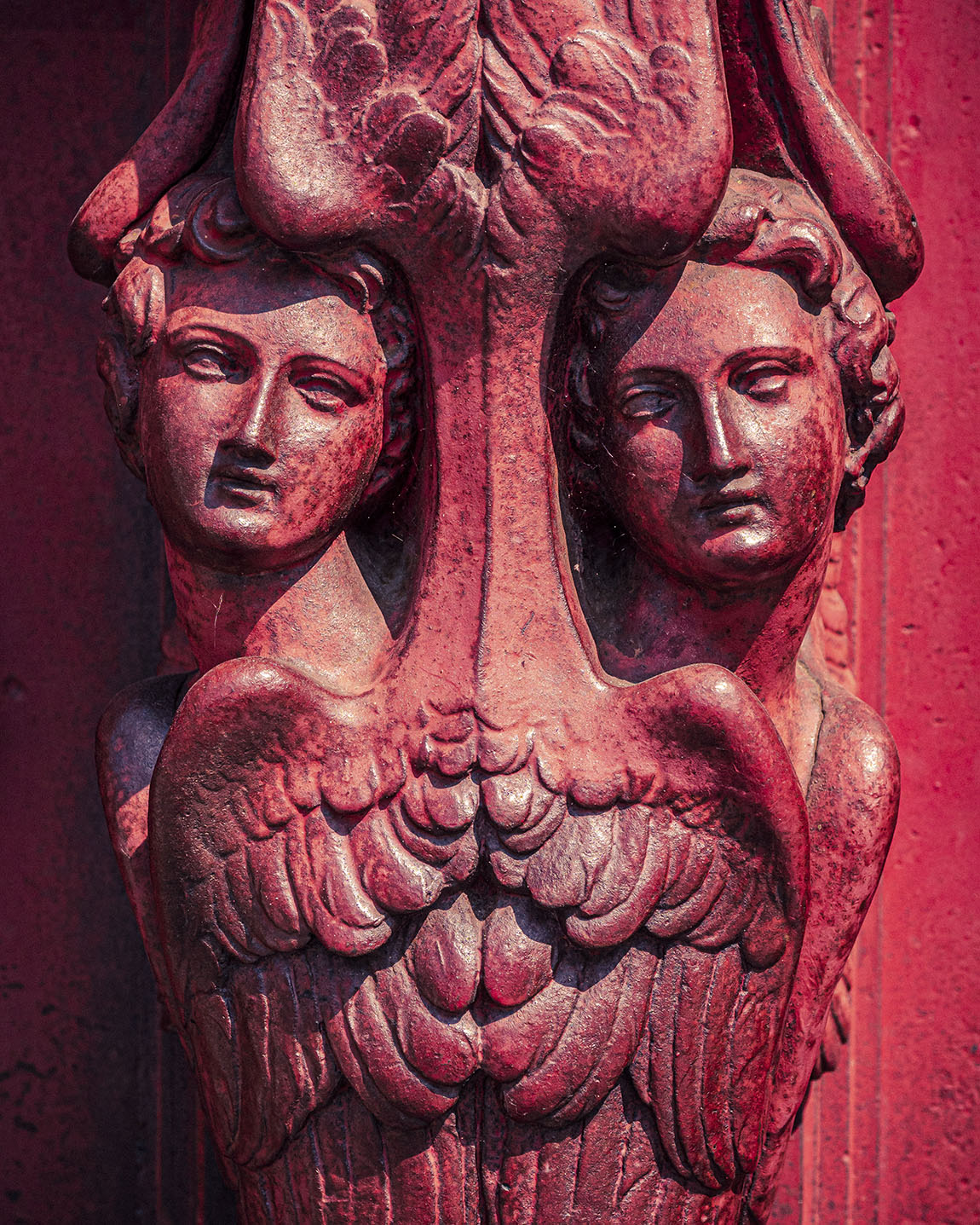
Église Saint Jean Baptiste, Béguinage. Photo: ©Visit Brussels
Among the locals on Rue de Flandre
Rue de Flandre is one of the cosiest streets in the city. It houses nice restaurants to suit all budgets, cute boutiques for the avid browser and exciting secrets around every corner. If you cross Place Sainte-Catherine, the street becomes Rue Sainte-Catherine, an equally cosy street with great gastronomy and countless Asian shops and taverns.
Rue de Flandre (Saint-Catherine, metro 1 and 5).
The place to be: Place Saint-Géry
After sunset, head to Saint-Géry to end your day with a tipple. Surrounding the old market hall, and even inside it, you’ll find many bars with charming fairy lights and colourful bunting. This is a local spot, so don’t hesitate to mingle with the Bruxellois. But Place Saint-Géry is so much more than just a bar-packed square. It is, in fact, the place where Brussels was founded in 979. The area was nothing but a swamp back then, but on an island, Duke Charles of Lower Lorraine built a chapel. Soon, more and more buildings were added, and the rest is history. Centrally in the market hall, there is a tower-high fountain. This is believed to be the exact spot of Brussels’ founding.
Place Saint-Géry (Bourse, tram 3 and 4). Free entrance to the hall. Hall is open daily from 10AM and until the bars close. Most bars work to similar schedules.
Design finds on Rue Antoine Dansaert
Rue Antoine Dansaert connects the city centre with the canal and presents two entirely different worlds. The part near the Bourse is packed with boutiques of hip designer brands and up-and-coming labels. A bit closer to the water, the street becomes less polished and rougher around the edges. Rue Antoine Dansaert is a good example of how rich and poor live side by side in Brussels. Many people live next door to someone from a wildly different demographic.
Rue Antoine Dansaert (Bourse, tram 3 and 4; De Brouckere, metro 1 and 5). Shops are usually open from 10AM to 6PM.
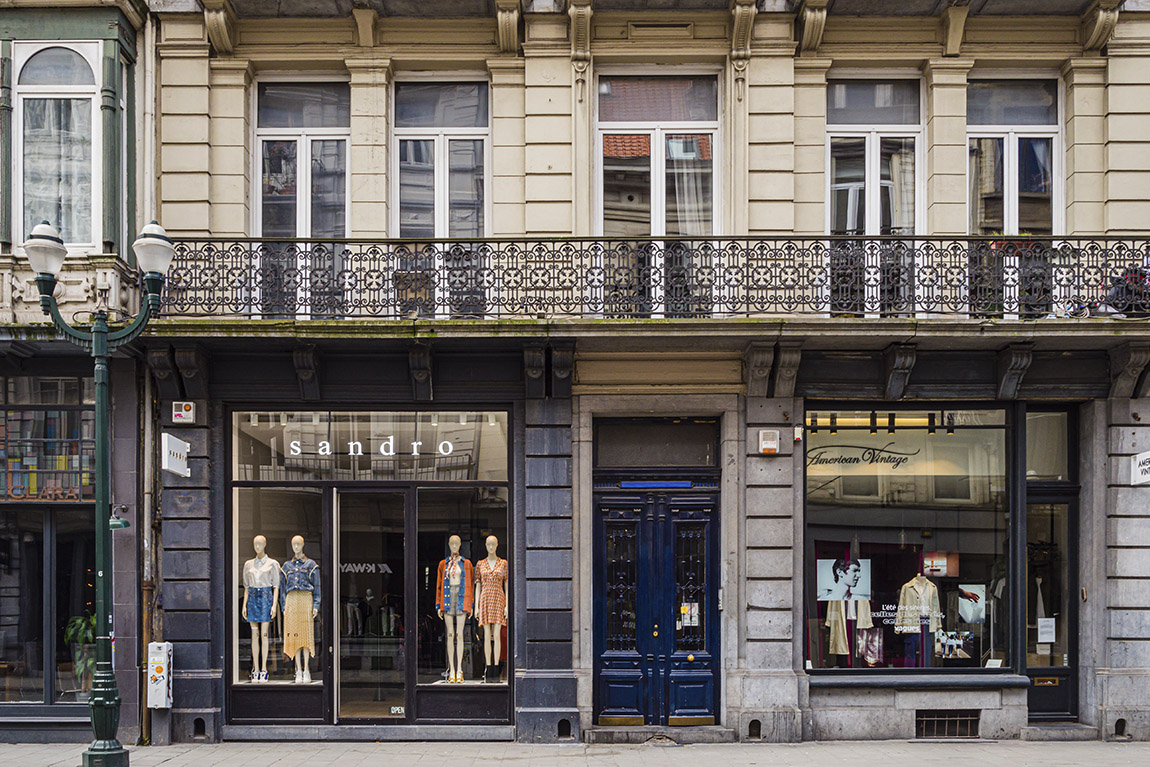
Rue Antoine Dansaert. Photo: ©Visit Brussels, Jean-Paul Remy
Place de Brouckère: Miniature Times Square
During the 1960s, Place de Brouckère was the metropolitan heart of the city. The billboards on the roofs and the modern kiosk in the middle gave it the nickname ‘Times Square of Brussels’. Today, however, little of that grandeur is left, and the same goes for the billboards. Only the iconic Coca-Cola advertisement and a colossal screen at the adjoining skyscraper hint at what it must have been like. Over the last few years, Brussels has greatly invested in this part of the city and turned the square and the adjoining Boulevard Anspach into a pedestrian zone. As a bad-weather plan, head to the UGC cinema on the square and buy a ticket for whatever film is playing in room seven. This is the Art Nouveau hall, called Salle du Grand Eldorado – an authentic, gold-covered screening room with exotic reliefs on the walls.
Place de Brouckère (De Brouckere, metro 1 and 5, tram 3 and 4).
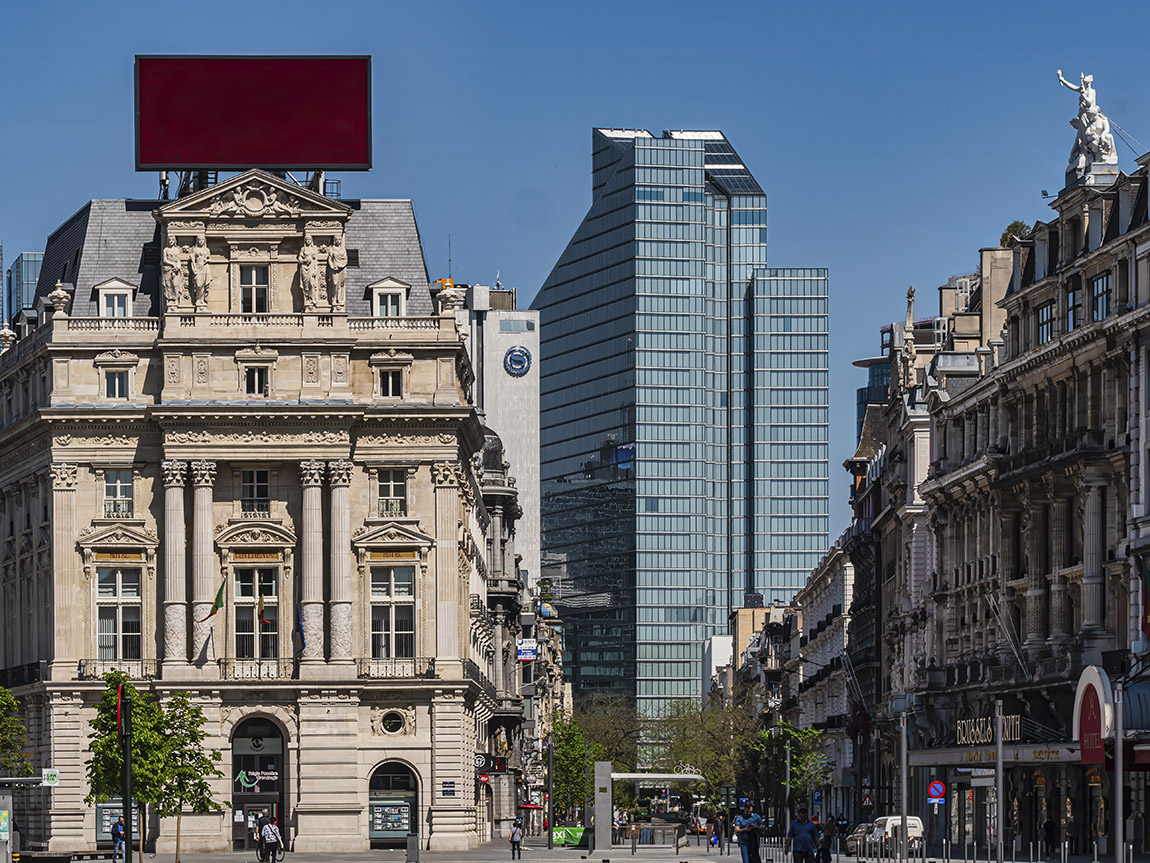
Place de Brouckère. Photo: ©Visit Brussels, Jean-Paul Remy
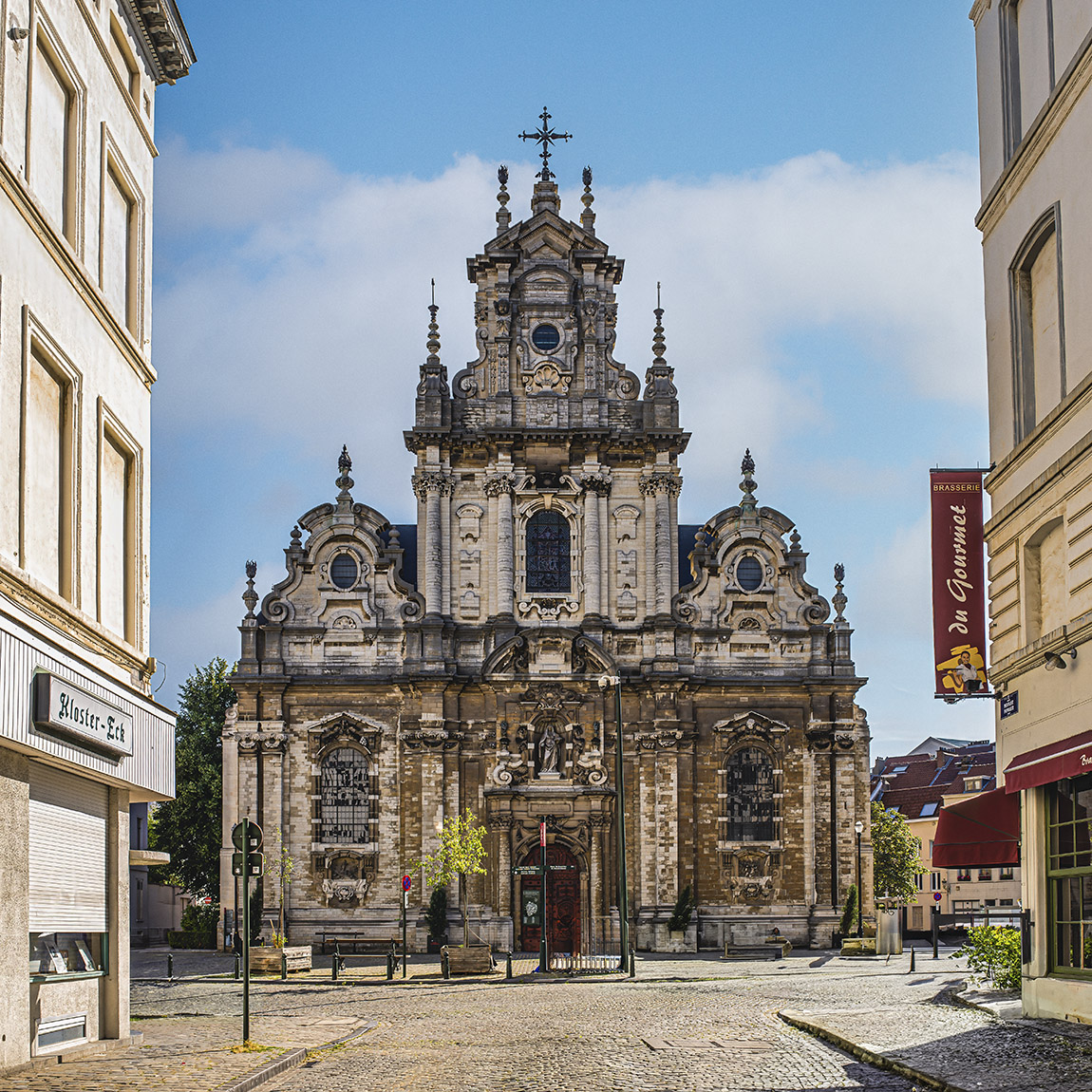
Église du Béguinage. Photo: ©Visit Brussels, Jean-Paul Remy
Béguinage: A forgotten corner
Many cities in Belgium count béguinages – convents of small houses where poor, widowed and retired devotees lived. In Brussels, the old béguinage is long gone, but the sacred quietness and serenity of yore still linger through the streets. Start your walk at the central Église du Béguinage and continue down the streets. On your left, you’ll find the Hospice Pachéco, a gigantic building that used to serve as a retirement home. Don’t expect too much from this neck of the woods, but keep it in mind whenever you’re in the mood for a few minutes of tranquillity.
Place du Béguinage and surroundings (Sainte-Catherine, metro 1 and 5).
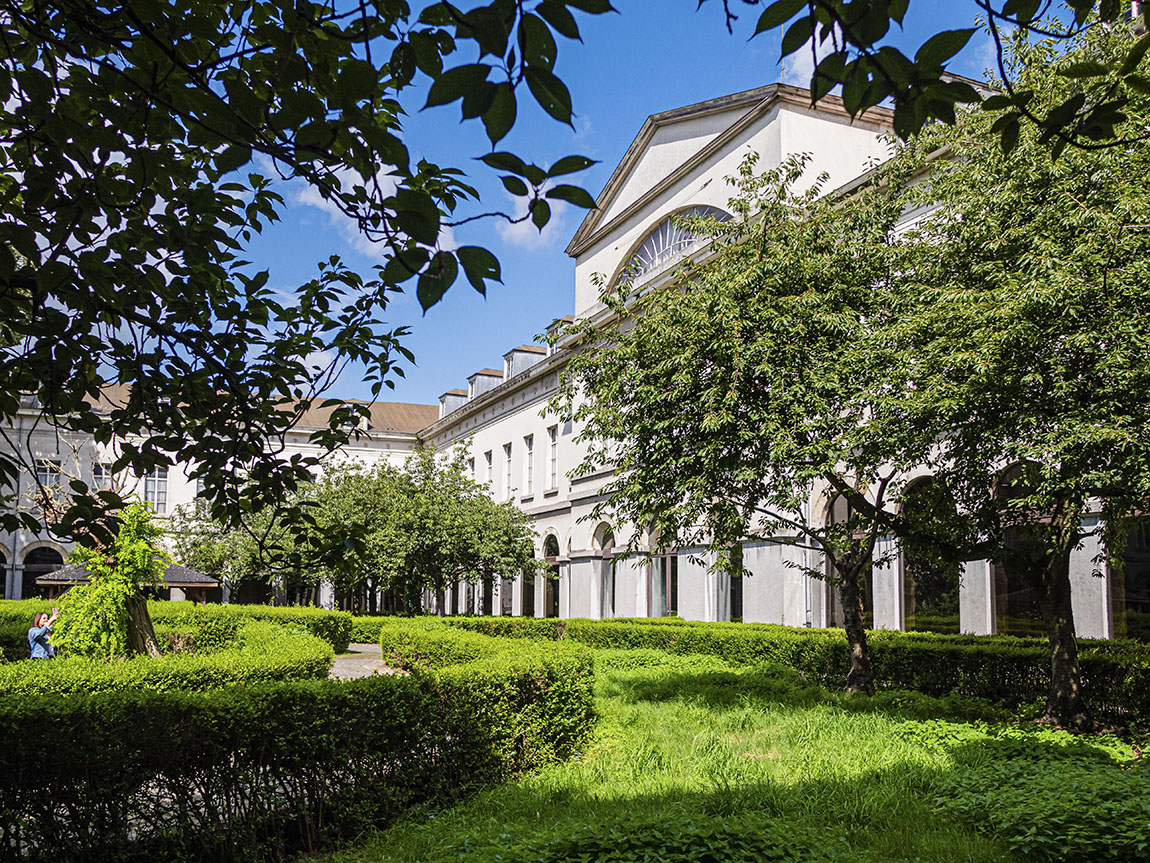
Hospice Pachéco. Photo: ©Visit Brussels
Subscribe to Our Newsletter
Receive our monthly newsletter by email
